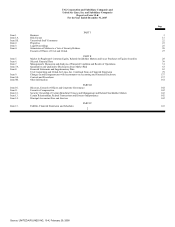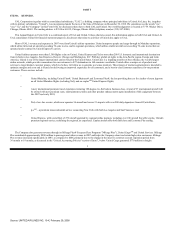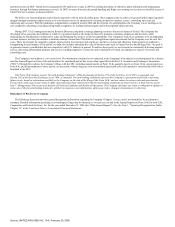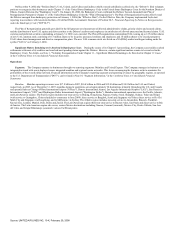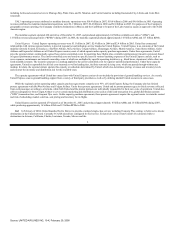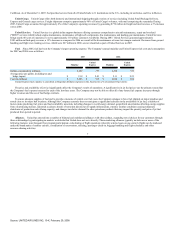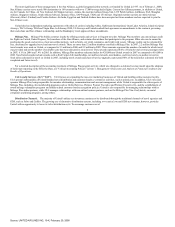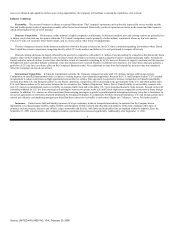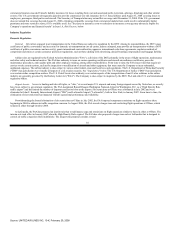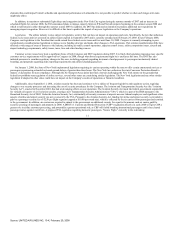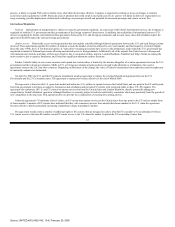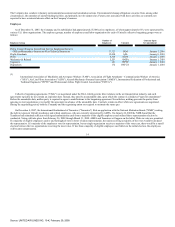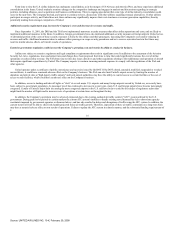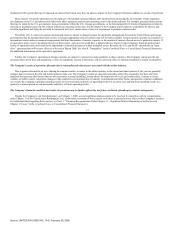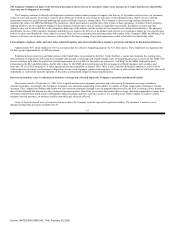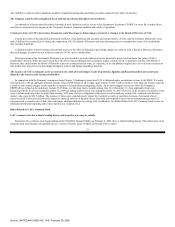United Airlines 2007 Annual Report Download - page 13
Download and view the complete annual report
Please find page 13 of the 2007 United Airlines annual report below. You can navigate through the pages in the report by either clicking on the pages listed below, or by using the keyword search tool below to find specific information within the annual report.
process, is likely to expand TSA's role in similar ways when that rule becomes effective. Congress is expected to continue to focus on changes to aviation
security law and requirements in 2008. Particular areas of attention that could result in increased costs for air carriers will likely include new requirements on
cargo screening, possible deployment of antimissile technology on passenger aircraft and potential for increased passenger and carrier security fees.
International Regulation.
General. International air transportation is subject to extensive government regulation. In connection with United's international services, the Company is
regulated by both the U.S. government and the governments of the foreign countries United serves. In addition, the availability of international routes to U.S.
carriers is regulated by treaties and related aviation agreements between the U.S. and foreign governments, and in some cases, fares and schedules require the
approval of the DOT and/or the relevant foreign governments.
Airport Access. Historically, access to foreign markets has been tightly controlled through bilateral agreements between the U.S. and each foreign country
involved. These agreements regulate the number of markets served, the number of carriers allowed to serve each market, and the frequency of carriers' flights.
Since the early 1990s, the U.S. has pursued a policy of "open skies" (meaning all carriers have access to the destination), under which the U.S. government has
negotiated a number of bilateral agreements allowing unrestricted access to foreign markets. Additionally, all of the airports that United serves in Europe and
Asia maintain slot controls, and many of these are restrictive due to congestion at these airports. London Heathrow, Frankfurt and Tokyo Narita are among the
most restrictive due to capacity limitations, and United has significant operations at these locations.
Further, United's ability to serve some countries and expand into certain others is limited by the absence altogether of aviation agreements between the U.S.
government and the relevant governments. Shifts in U.S. or foreign government aviation policies can lead to the alteration or termination of air service
agreements between the U.S. and other countries. Depending on the nature of the change, the value of United's international route authorities and slot rights may
be materially enhanced or diminished.
On April 30, 2007, the U.S. and the EU signed a transatlantic aviation agreement to replace the existing bilateral arrangements between the U.S.
Government and the 27 EU member states. The agreement is expected to become effective at the end of March 2008.
The agreement is based on the U.S. open skies model and authorizes U.S. airlines to operate between the United States and any point in the EU and beyond,
free from government restrictions on capacity, frequencies and scheduling and provides EU carriers with reciprocal rights in these U.S./EU markets. The
agreement also authorizes all U.S. and EU carriers to operate services between the United States and London Heathrow, thereby potentially adding new
competition to United's Heathrow operation, although Heathrow is currently subject to both slot and facility constraints which may practically limit the growth of
new competition in the near term. This agreement does not provide for a reallocation of existing slots among carriers.
Under the agreement's "Community Carrier" clause, an EU carrier may operate services to the United States from any point in the EU and not simply from
its home market. A number of EU carriers have indicated that they will commence services from outside their home markets to the U.S. when the agreement
becomes effective, thereby potentially increasing competition in many transatlantic markets.
The agreement would confer a number of additional rights to EU carriers that are designed to redress what the EU considers to be an imbalance between
U.S. carrier access to the intra-EU market versus EU carrier access to the U.S. domestic market. In particular, EU ownership of more than
12
Source: UNITED AIR LINES INC, 10-K, February 29, 2008


